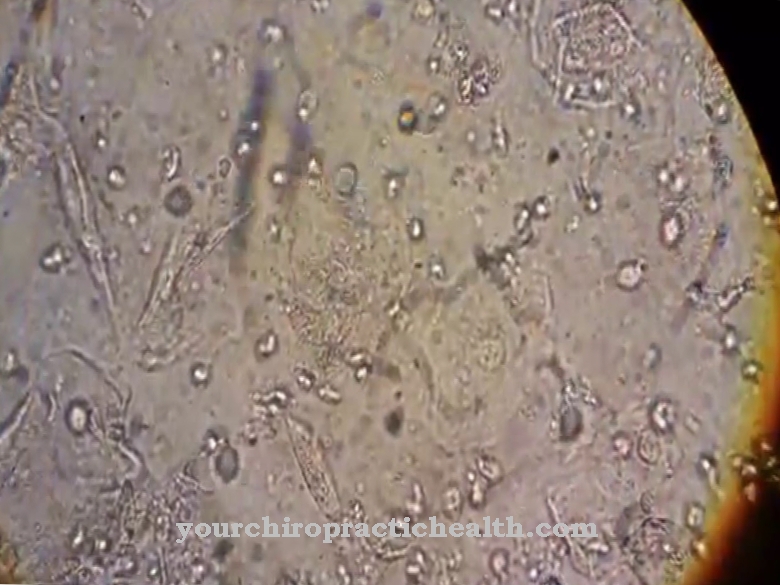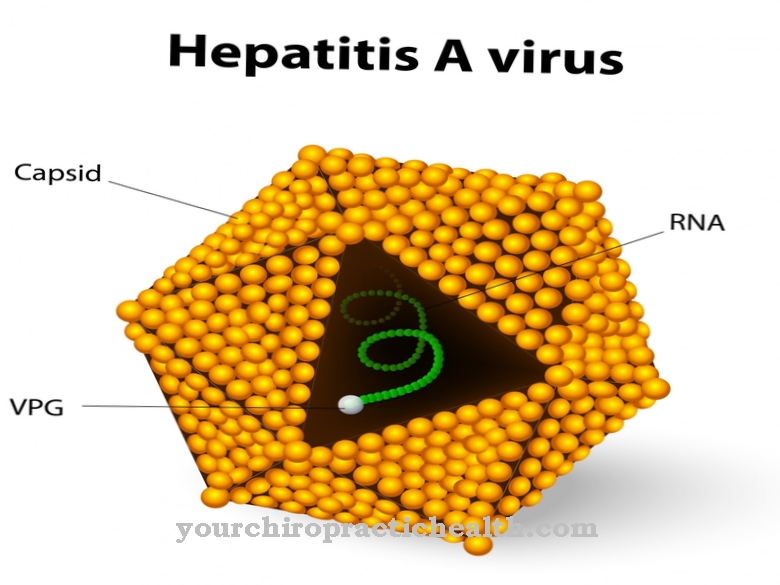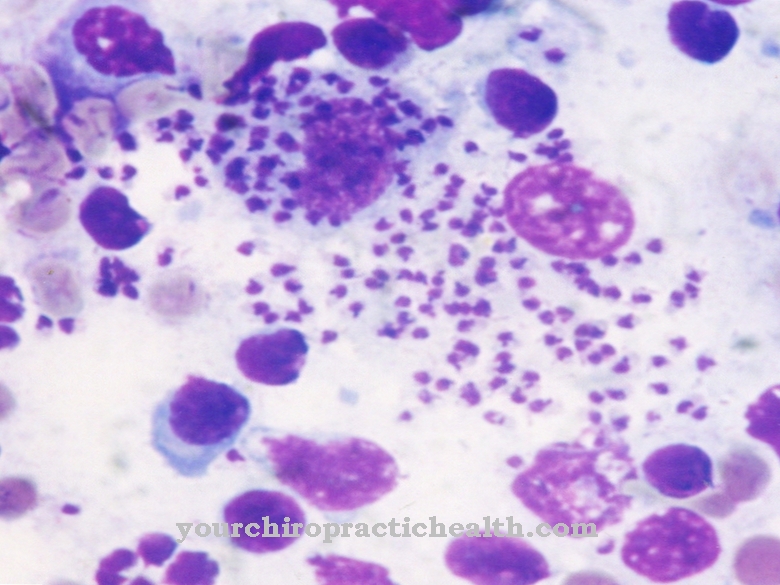Gardnerella vaginalis is a rod-like bacterium that is part of the vaginal flora. If it colonizes the vagina in high numbers of germs, it can cause bacterial vaginosis, which may be followed by inflammation of the vagina (colpitis). The germ is named after one of its discoverers, the US gynecologist Herman L. Gardner (1912-1982). The bacterium is relatively harmless in low occurrences and occurs in around 40 percent of all women. However, if the vagina is badly colonized, the protective elements of the vaginal flora are weakened. Gardnerella vaginalis can reach the upper genital tract with other pathogenic bacteria and cause bothersome infections in the uterus and ovaries. These are associated with an unpleasant odor from the vaginal discharge. The inflammation can lead to infertility. Bacteria pose a particular risk during pregnancy and childbirth.
What is Gardnerella vaginalis?
The pathogenic bacteria under the guidance of the main germ Gardnerella vaginalis form a dense biofilm on the surface of the vaginal wall. This layer of mucus is responsible for the typical unpleasant odor and destroys the balance of the existing vaginal flora. Bacterial vaginosis is often caused by too much psychological stress. Sexual intercourse is also a major cause of the disease.
The characteristic grayish-white discharge, which can be very thin, is only noticeable in just under half of the women affected. The accumulation of bacteria can cause itching and irritation of the surrounding skin.
During pregnancy, bacterial vaginosis can trigger premature labor, premature rupture of the amniotic sac and even premature birth. This may happen through atypical biochemical reactions between the fetus and the uterus, which are related to the bacterial overgrowth. Increased production of prostaglandin is used in obstetrics to trigger labor.
Occurrence, Distribution & Properties
Gardnerella vaginalis is considered to be the main cause of bacterial vaginosis. The bacterium manages its entire metabolism without oxygen, i.e. H. it lives anaerobically. It is one of many bacteria in the vaginal flora, but it is a very important one. The great diversity of the smallest organisms in the vaginal area is made up to a considerable extent of lactobacilli. There they essentially preserve the biological balance. The lactobacilli are producers of lactic acid, with which they lower the pH value to 4.4 to 3.8. It is therefore clearly in the acidic range under regular conditions. So far around 200 different strains of lactic acid bacteria have been found in the vagina.
Disease-causing bacteria are usually in the minority. With their small number, they have little effect on the vaginal flora. In addition to the anaerobic bacteria, they also include the aerobic bacteria, for which oxygen is the basis of life. Some germs colonize the vagina only temporarily, others live there permanently without causing any harmful effects.
The entirety of the microorganisms ensures that the vagina is protected from diseases. With the densely populated area, there is practically no room for pathogens. In addition, the low pH value offers poor growth conditions for harmful germs. If these conditions change, however, the activity of the pathogens may suddenly suddenly increase significantly. The vaginal flora then loses its natural protection. Harmful bacteria can spread and cause inflammatory diseases.
The Gardnerella vaginalis bacterium multiplies particularly strongly under this changed climate. The multiplication can be a factor of 100, with some anaerobic pathogens even 1000. In contrast, the number of lactobacilli decreases significantly. This sudden serious disparity gives rise to the various infectious diseases in the female genital area.
If bacterial vaginosis occurs, the characteristic symptoms do not necessarily have to arise. The signs of illness can be effectively suppressed with antibiotics. Natural remedies for eliminating the imbalance of the vaginal flora are also becoming increasingly popular. For example, milk, oregano oil, black tea, tea tree oil or lemon water can be brought into the vagina with the help of a tampon in order to have a balancing effect. Patients are also said to have had positive experiences with ascorbic acid (vitamin C) and probiotic yoghurts. Lactobacillus strains or suitable acid substances can also be introduced via special vaginal suppositories, with the help of which the pH value in the vaginal area is lowered.
Illnesses & ailments
To counter the harmful effects of Gardnerella vaginalis, vaginal douches or special disinfecting suppositories can be used. However, vaginal hygiene should not be overdone, as this can also disturb the natural balance of the flora. A natural soap without fragrances is well suited.
Caution during sex can also protect against unpleasant infections, especially in cases of frequently changing sexual partners, because bacterial vaginosis can be passed on via smear and contact infections. The corresponding pathogens also affect male intimate areas such as the urethra.
Women are also at greater psychological stress at the risk of becoming infected with bacteria through the vagina. Even if the immune system is weakened or not in balance, it can lead to corresponding impairments. It is estimated that one in five women will have bacterial vaginosis at least once in their life. This happens above all in times of hormonal fluctuations or upheavals. Menstrual and menopausal women and pregnant women are particularly susceptible to this.

























.jpg)


